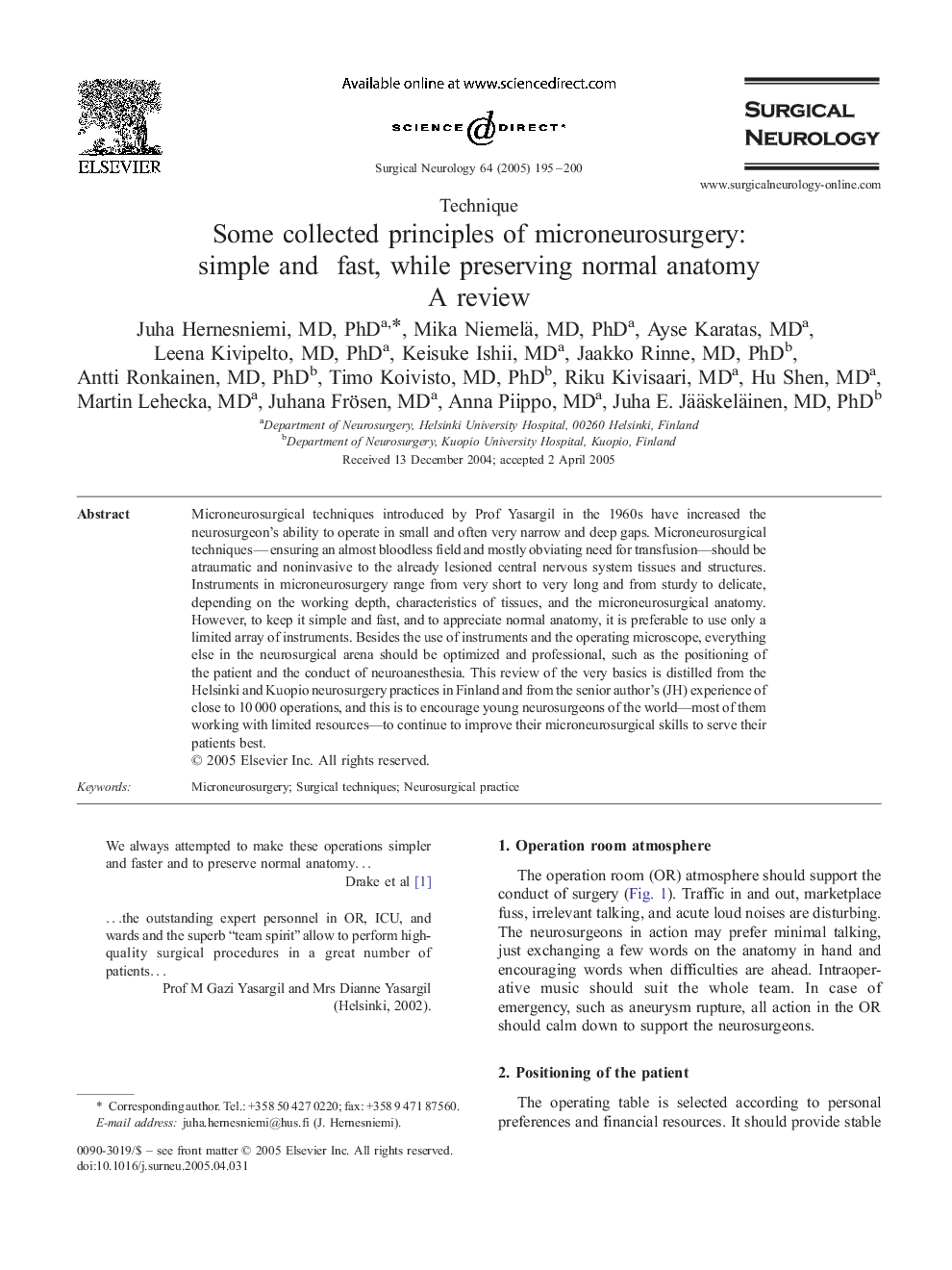| Article ID | Journal | Published Year | Pages | File Type |
|---|---|---|---|---|
| 9203860 | Surgical Neurology | 2005 | 6 Pages |
Abstract
Microneurosurgical techniques introduced by Prof Yasargil in the 1960s have increased the neurosurgeon's ability to operate in small and often very narrow and deep gaps. Microneurosurgical techniques-ensuring an almost bloodless field and mostly obviating need for transfusion-should be atraumatic and noninvasive to the already lesioned central nervous system tissues and structures. Instruments in microneurosurgery range from very short to very long and from sturdy to delicate, depending on the working depth, characteristics of tissues, and the microneurosurgical anatomy. However, to keep it simple and fast, and to appreciate normal anatomy, it is preferable to use only a limited array of instruments. Besides the use of instruments and the operating microscope, everything else in the neurosurgical arena should be optimized and professional, such as the positioning of the patient and the conduct of neuroanesthesia. This review of the very basics is distilled from the Helsinki and Kuopio neurosurgery practices in Finland and from the senior author's (JH) experience of close to 10Â 000 operations, and this is to encourage young neurosurgeons of the world-most of them working with limited resources-to continue to improve their microneurosurgical skills to serve their patients best.
Related Topics
Life Sciences
Neuroscience
Neurology
Authors
Juha MD, PhD, Mika MD, PhD, Ayse MD, Leena MD, PhD, Keisuke MD, Jaakko MD, PhD, Antti MD, PhD, Timo MD, PhD, Riku MD, Hu MD, Martin MD, Juhana MD, Anna MD, Juha E. MD, PhD,
